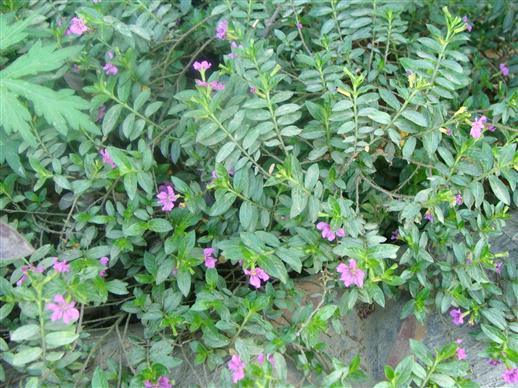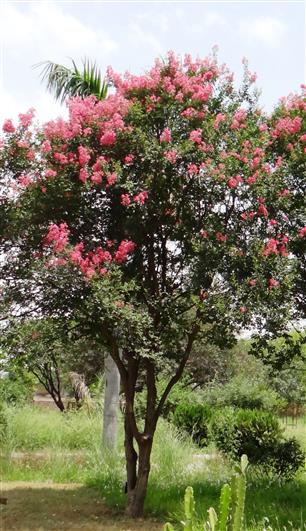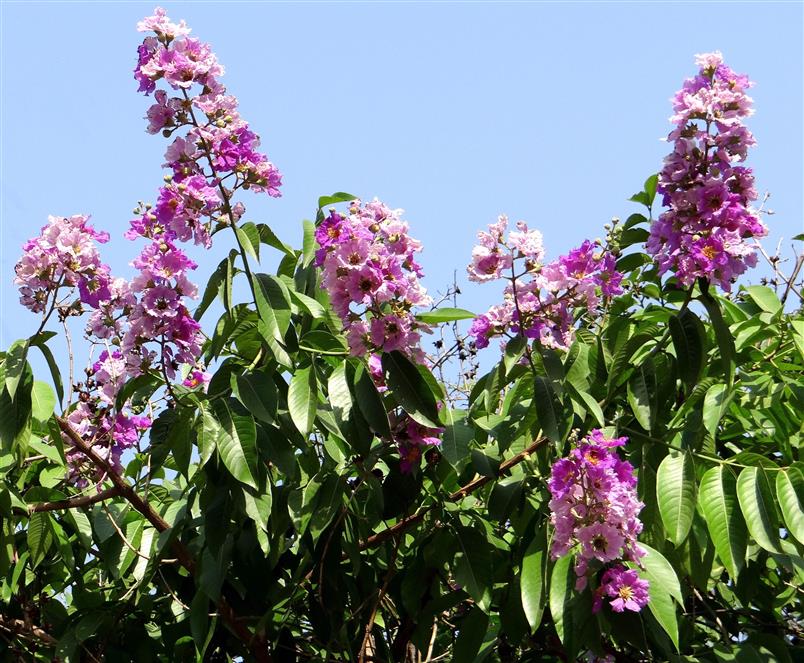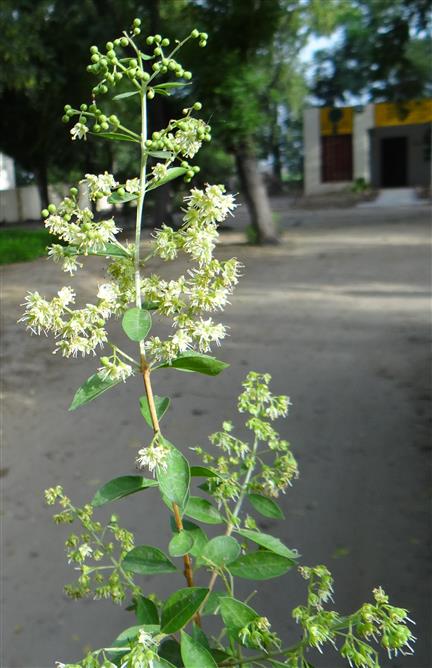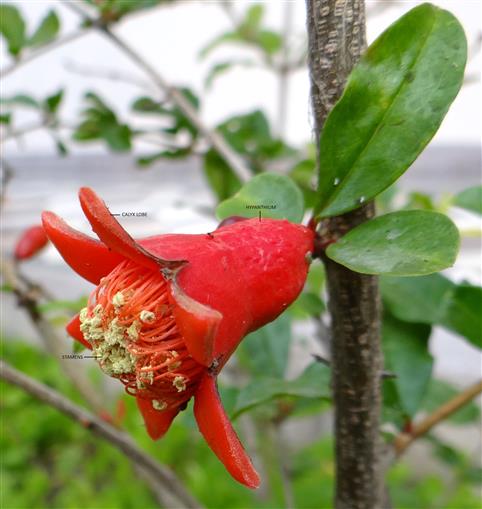LYTHRACEAE
Trees, shrubs or herbs. Leaves opposite, rarely alternate, exstipulate, subsessile or sessile, simple, entire. Inflorescences racemes, cymes, panicles or solitary, axillary or terminal. Flowers actinomorphic, rarely zygomorphic, hermaphrodite, perigynous or rarely epigynous (Punica), 4-7-merous, bracteate, often bracteolate. Epicalyx present or absent. Calyx tube (Hypanthium) usually +/- campanulate or tubular; lobes 4-7, triangular or ovate, valvate; calyx persistent. Petals inserted at rim of hypanthium, alternating with calyx lobes, usually crumpled (crinkled), variously coloured, sometimes minute or absent. Stamens inserted on hypanthium, equal or twice the number of calyx lobes or numerous, filaments bent inwards in bud. Carpels 2-6, syncarpous, ovary superior, rarely inferior, 1-6 (-9)-locular, placentation axile or free central, rarely parietal, ovules numerous; style usually filiform; stigma often capitate. Fruit capsule or baccate, membranous or coriaceous, encircled round the base by calyx or included in or surmounted by it, variously dehiscent or rarely indehiscent.
28 genera 604 species
